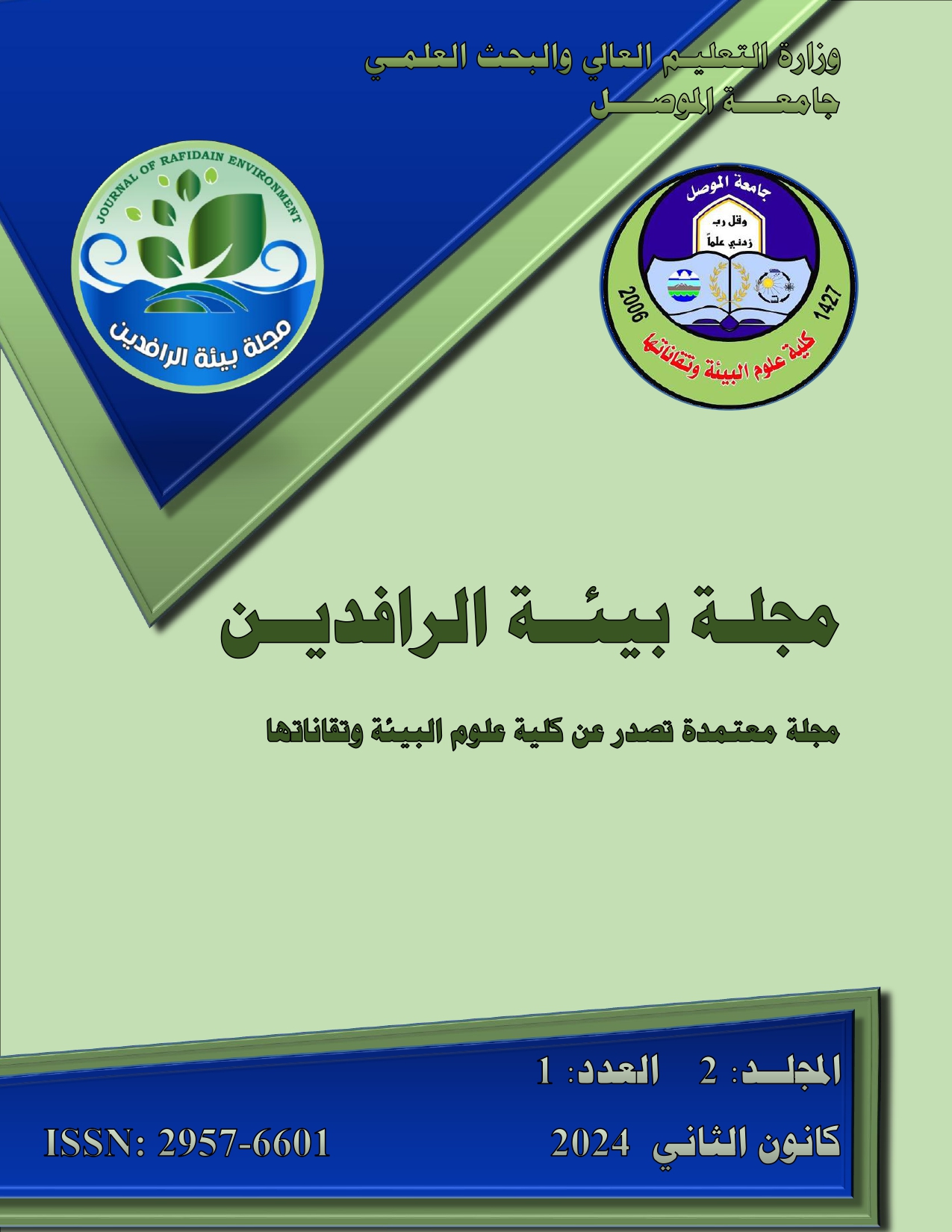المعالجة الميكانيكية لأنواع مختارة من الفضلات البلاستيكية ( بولي اثيلين تيرافثاليت(PET)، والبولي اثيلين (PE) )

منشور
Oct 6, 2025##editor.issues.pages##
28-41الملخص
هدفت الدراسة الى معالجة النفايات البلاستيكية للوصول إلى مواد بلاستيكية أكثر فائدة، والكشف عن فوائد إعادة تدوير النفايات البلاستيكية والطرائق المناسبة للتخلص منها. فقد توصلت الدراسة إلى أن إعادة التدوير الميكانيكي المخلفات البلاستيكية لإنتاج شرائح بلاستيكية واشكال اسطوانية من البلاستك بعمليات بسيطة ومنخفضة التكلفة وصديقة للبيئة والتي تعدّ نهجًا عمليًا لتقليلها والحفاظ على مفهوم الاستدامة من خلال إعادة التدوير الميكانيكي للعديد من المواد البلاستيكية مثل البولي اثيلين تيرفثاليت والبولي اثيلين عالي الكثافة والبولي اثيلين منخفض الكثافة، ليتم خفض حجمها بمقدار 55%. فقد ظهرت نسب متقاربة نوعاً ما بسبب قلة إنتاجها وعدم تأثرها بظروف العوائل المختلفة. ظهرت المخلفات البلاستيكية بقيم مختلفة نتيجة الاستخدامات المتعددة للمواد البلاستيكية، والتي شملت في تركيبها الكيميائي الأنواع الرئيسية (البولي اثيلين تيرافثاليت والبولي فنيل كلورايد والبولي بروبلين والبولي ستايرين والأخرى من المواد البلاستيكية ) والتي تمثلت في ( قناني مياه الشرب وأكياس التسوق والسلال والعصائر والأدوية وخراطيم مياه الحدائق والألعاب البلاستيكية وعبوات حفظ الزيوت والكراسي وأواني المطبخ وحاويات الصابون السائل وقناني الحليب وأجزاء السيارات)، والتي تراوحت ما بين أعلى إنتاجية من المخلفات البلاستيكية (0.41 كغم/فرد / يوم ) بينما انخفضت الإنتاجية إلى ( 0.21 كغم / فرد / يوم) وبمعدل إنتاجية لها ( 0.24 كغم/فرد/يوم)، يعزى ذلك إلى اختلاف العوائل من حيث المستوى الاقتصادي والمعاشي والثقافي والذي يؤثر على إنتاجية النفايات وكذلك اختلاف أعداد أفراد الأسرة الواحدة، فقد شكلت الأنواع المختلفة مثل البولي اثيلين ترافثاليت والبولي اثيلين عالي الكثافة والبولي اثيلين واطئ الكثافة النسبة الاكبر من المخلفات البلاستيكية المنتجة بنسبة (16-40%) بواقع ( 0.225- 0.008 كغم/فرد/يوم)، بينما وجدت الأنواع الأخرى من المواد البلاستيك بكميات متقاربة على الأغلب.
المراجع
- Al-Rubaie, Heba Mishal Awad, 2018 “A study on the recycling processes of plastic polymer waste found in sanitary landfills” , College of Science, Department of Chemistry, University of Mosul, Iraq.
- Al-Oud, Muhammad Rashid And Qashout, Salma Ahmed Muhammad And Masoud , Fathi Abdel Aziz 2015 “Plastic waste and its effects on the environment and humans and modern methods for utilizing and disposing of it” , Journal of Marine Sciences and Environmental Technologies, Volume (1), Issue (2), December.
- Baran, B. 2020” Plastic waste as a challenge for sustainable development and circularity in the European Union” Ekonomia i Prawo. Economics and Law, 19(1):7-20. doi: 10.12775/EIP 2020.001.
- Mazhandu, Z.S.; Muzenda, E.; Mamvura, T.A.; Belaid, M. 2020 “Integrated and consolidated review of plastic waste management and bio-based biodegradable plastics: Challenges and opportunities Sustainability” 12, 8360.
- L. Dai, et al., Prog. Energ. Combust. Sci. 93, 101021 10. H. Li et al., 2022 "Expanding Plastics Recycling Technologies: Chemical Aspects. Technology Status and Challenges ChemRxiv 10.26434/chemrxiv”.
- Singh, G. K., Gupta, K., and Chaudhary, S. 2014 “Solid waste management: its sources, collection, transportation and recycling”. International Journal of Environmental Science and Development, 5(4), 347.
- Kumar, G.M.; Irshad, A.; Raghunath, B.; Rajarajan, G. 2016 “Waste management in food packaging industry” Integrated Waste Management in India; Springer: Heidelberg/Berlin, Germany,; pp. 265–277.
- Geyer, R., Jambeck, J.R., & Law, K.L. 2017 “Production, use, and fate of all plastics ever made” Science Advances, 3(7). doi:10.1126/sciadv.1700782.
- Scheirs, J.1998 "Polymer Recycling : Science, Technology and Applications", John Wiley &Sons Ltd , London.
- Aguado, J. and Serrano D. 1999 , " Feedstock Recycling of Plastic Wastes” The Royal Society of Chemistry , ISBN 0-85404-531-7 , U.K.
- Lopez, G.; Artetxe, M.; Amutio, M.; Alvarez, J.; Bilbao, J.; Olazar, M. 2018 “Recent advances in the gasification of waste plastics” A critical overview. Renew. Sustain. Energy Rev82, 576–596.
- Lerici, L.C., Renzini, M.S.; Pierella, L.B. 2015 “Chemical catalyzed recycling of polymers: Catalytic conversion of PE, PP and PS into fuels and chemicals over HY”. Procedia Mater. Sci., 8, 297–303.
- Al-Salem, S. , Lettieri , J. , Baeyens , J.2009 " Recycling and Recovery Routes of Plastic Solid Waste (PSW) : A review Waste Management” 29(10) 2625-2643.
- Karayannidis, G.P. and Achilias , S.D. 2007" Chemical Recycling of Poly (ethylene terephthalate)" , Macromol . Mater Eng. , 292(2) , 128-146.
- Hopewell, J.; Dvorak, R.; Kosior, E. , 2009 “Plastics recycling: Challenges and opportunities” Philos. Trans. R. Soc. B Biol. Sci364, 2115–2126.
- Al-Samawi A. Abdul-Razzak T, and Anmar A. 2009 " Estimation of Baghdad Municipal Solid Waste Generation Rate" Eng. & Tech. Journal Vol. 27., No.1.
تنزيل هذا الملف
الإحصائيات
##submission.copyrightAndLicensing##

هذا العمل مرخص بموجب Creative Commons Attribution-NonCommercial 4.0 International License.